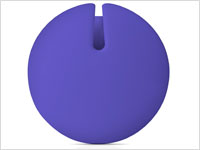GPS vs. cell-phone navigation
 Monday, November 29, 2010 at 08:02AM
Monday, November 29, 2010 at 08:02AM Faceoff: GPS navigator vs. cell-phone navigation
Drivers looking for an electronic navigational assistant have more choices than ever these days. Basic dedicated GPS navigators can be found for less than $100, and they are still a wise choice if you don't mind carrying a single-purpose device. Personal navigation devices (PNDs) are ready to go right out of the box, with a mount and charger included. Plus, they are easy to use and can be shared with family or friends.
Smart phones are an increasingly popular navigation option, especially among models that come with turn-by-turn guidance built in. Other phones require purchase of a downloadable navigation app or a service subscription. In our tests, we have found that the best navigation applications are made by well-known GPS companies like Navigon, TomTom, and Magellan. These apps look and function much like a standalone GPS unit.
Virtually any new cell phone is now capable of giving directions, whether it's smart or otherwise. Cell-phone providers, such as ATT and Verizon, offer turn-by-turn directions for a fee, usually about $10 per month or $3 per day. This form of navigation aid is handy for a vacation or if you only need directions occasionally.
If you choose to go with a phone for guidance, keep in mind that a phone with a large screen will be easier to read and use on the go, and it can come closest to the performance of a portable GPS unit. But with any phone, you'll have to buy a mount and car charger separately, which can add another $50 or so. A good navigation app adds another $50, making the combined cost about as much as a dedicated device. And if you opt for a subscription plan, instead of a downloaded application, the monthly fee can quickly add up to more than the cost of a basic GPS in just a year.
Which is solution right for you?
Here’s a quick guide to the pros and cons of approach:
Portability: Using your cell phone means you have one less thing to lug around. On the other hand, you have to mount it to the windshield every time you use it, which could be more hassle than a GPS device that you leave mounted all the time or at least in between stops (in less theft-prone areas, of course).
Advantage: Depends on your situation.
Dependability: Any system will likely get you to your destination. But one big limitation of most cell phones (typically subscription based navigation) is that if you’re in an area with a poor cellular signal, the navigation system won’t work reliably. Models that load maps into the unit’s memory are an exception. Also, using navigation can run down a cell-phone battery, so you’ll want to plug it in when in use. A GPS device tends to lose much of its energy when sitting unused for a few day, meaning that in practice, a dedicated device will likely need to be plugged-in when in use.
Advantage: GPS.
Up-to-date info: The map and route information that cell phones download is always the most current version supplied by the map provider. With GPS units, you have to buy map updates and install them yourself. These can cost $50 to $80.
Advantage: Cell phone. Manufacturers are now offering different pricing plans to get updated maps such as one to four updates in one year or lifetime updates. (This advantage may be diminishing for cell phones.)
Displays and buttons: The large touch screens on GPS navigators are easy to read and use. Most cell phones have much smaller screens and small, hard-to-use buttons. Of course, some newer smart phones have good touch screens that are about the same size or larger than GPS devices.
Advantage: GPS and some smart phones.
Cost: You can buy a good GPS device for $100 to $250. And once you’ve bought it, you’re good to go. With cell phones, you have to pay an ongoing subscription fee (unless you pay by the day), whether it’s for a dedicated navigation service ($10 per month) or a cellular data connection (often about $30 per month premium). These costs can quickly add up to more than you’d pay for the GPS unit. A navigation smart-phone app could cost you an additional $30 to $75 but do not carry the monthly fee. Of course, if you have a smart phone with a built-in nav program and you’re already paying for a data feed, then navigation doesn’t cost you anything more.
Advantage: GPS and some smart phones.
Accessories: All GPS navigators come with a mount and an in-car charger. But you’ll have to buy them separately for a cell-phone, which could cost you another $50 or more.
Advantage: GPS.
Choosing a navigation solution can be tough. Clearly, there are a lot of pros and cons to consider. Remember, a key factor is what you already have. If you own a large-screen cell phone, it may make sense to enhance that as an all-in-one device with an app and mount.
If it is time to upgrade a phone, you have a more options. But remember, you can’t readily share a phone.
For a family looking to limit expenses and doesn’t need a pricey smart phone, then a dedicated device would be the most cost-effective solution.
See our complete GPS buying advice and ratings, and also review our cell phone buying advice and ratings.
Consumer Reports Cars Blog: Faceoff: GPS navigator vs. cell-phone navigation
 Miguel M. de la O | Comments Off |
Miguel M. de la O | Comments Off |  Cellphones,
Cellphones,  Electronics,
Electronics,  Life,
Life,  Travel
Travel 


